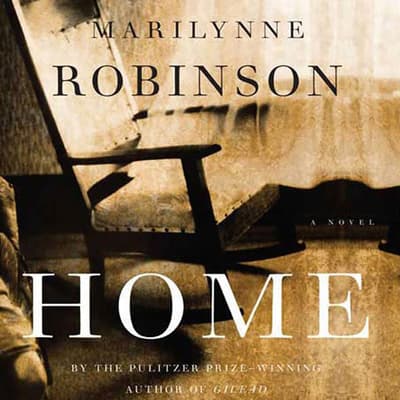

(Gilead is modeled after the real-life town of Tabor, Iowa, founded by abolitionists, just as Faulkner’s Jefferson is modeled on Oxford, Mississippi.) Ames’s eccentric grandfather, a one-eyed preacher and veteran of the Free Soil movement to bring Kansas into the Union as a slavery-free state, had enlisted in Brown’s guerrilla war, bellowing from the pulpit with a gun in his holster. In Robinson’s version of William Faulkner’s Yoknapatawpha County, the Ameses and Boughtons are more sepia-toned than the Snopes and Sartoris families-Midwestern nice rather than Southern Gothic-but she’s as evocative in her mythmaking as Faulkner. For John Ames, the past is present: He must get it all down on the page before it’s too late. And yet at the back of Robinson’s dioramas loom distant, blood-soaked events: She traces a seam in the prairie sod to a moment when the word abolition hung in the air, when Ames’s father was a boy, when John Brown thundered along Pottawatomie Creek.

These narratives overlap chronologically, like a Cubist canvas dissecting the social landscape of rural America through diverse perspectives.

Play icon The triangle icon that indicates to play Jack, as he’s known, is the adored black sheep of the family, who seemingly comes and goes at his pleasure. Robert Boughton has even named his favorite son after Ames. Together, the two men of the cloth ponder theological and moral questions. One thread that runs throughout Gilead-as well as Home (2008), Lila (2014), and Jack (2020)-is the intricate weave of relationships between the Ames family and the Boughtons, whose patriarch, a Presbyterian minister, is John Ames’s best friend. Reverend Ames is elderly, in his 70s his much younger wife and son are grace notes to a life lived, somewhat ambivalently, in the service of his lord. What her characters yearn for is nothing less than God. Here’s a writer who listens to us all, as well as to the yearnings of her characters. Robinson has spent the better part of two decades, in four stand-alone novels that connect through their characters and settings, exploring the notion that, as the author has observed, beauty is “a casual glimpse of something ordinary.” Her moral authority is commanding, and her ear for our country’s language-its conversational rhythms, its plainspokenness-is impeccable. Just a few pages into the novel the reader can see why it won the Pulitzer Prize in 2005-and why it continues to enthrall.


 0 kommentar(er)
0 kommentar(er)
